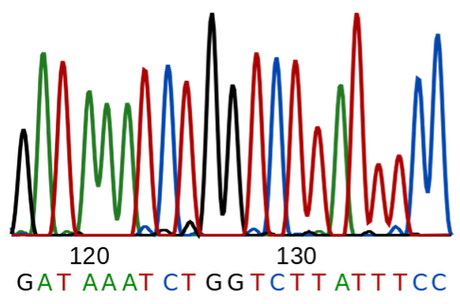Graham Williams, University of Huddersfield
DNA profiling (or genetic fingerprinting) has proved a revolutionary tool for forensic investigators as a means to identify potential suspects, exonerate the innocent and convict the guilty. But, like any forensic technique, it has its limitations. One limitation is in cases involving identical twins, something that has raised technical, legal and ethical problems – until now.
The more closely related one human is to another, the more similar their DNA profiles. For example, the probability of a DNA match between two random, unrelated individuals is in the region of one in a billion. For two full siblings, the probability drops to one in 10,000. Identical twins present the same DNA profile.
In forensic investigations, this presents problems. Under the ethical premise that it is better to let ten guilty men go free than to imprison one innocent man, if the courts cannot decide which twin is responsible then both must go free. There have in fact been a small number of high-profile cases where the suspects were identical twins, leading forensic genetics researchers to explore how this could be addressed. Now we’ve come up with a solution, recently published in the journal Analytical Biochemistry.
Finding a difference between equals
One method is mutation analysis, where the whole genome of both twins is sequenced to identify mutations that might have occurred to one of the twins. If such a mutation is identified at a particular location in the twin, then that same particular mutation can be specifically searched for in the crime scene sample. However this is very expensive and time-consuming, and is unlikely to be paid for by cash-strapped police forces.
The Forensic Genetics Research Group has demonstrated proof of principle of a cheaper, quicker technique. The basic principle behind this test is the concept of DNA methylation. This is effectively the molecular mechanism that turns on and off various genes.
For example, a blood-specific gene is also present in brain cells, but the cells in the brain do not produce the blood-specific component, because the gene is “switched off”. Many mechanisms affects the methylation status – whether a particular gene is “on” or “off” – of the DNA, but in the case of identical twins, the significant factor is environmental effects on them since birth.
As the twins grow older, the degree of difference between them grows as they are subjected to increasingly different environments. For example, one might take up smoking, or one might have a job outdoors and the other a desk job. This will cause changes in the methylation status of the DNA.
Methylation and melt
In order to analyze this, the DNA is extracted from the sample and then undergoes a process called bi-sulfite treatment. This reaction targets the methylated areas of the DNA and changes the sequence of its component nucleotide bases, known as A, C, G, and T.

DNA sequence, showing GATC nucleotides. Sjef
If a section of DNA is heavily methylated and then subjected to bi-sulfite treatment, the DNA sequence becomes heavily changed, so that for example C becomes T. The new characteristics of the DNA could be discovered by further sequencing – but again, this is expensive. Instead we carry out what is called high resolution melt curve analysis (HRMA).

Graph showing the different melt temperatures of DNA samples taken from two identical twins. Stewart et al./Analytical Biochemistry, Author provided
Human double stranded DNA is held together by hydrogen bonds that link these ACGT nucleotide bases. Guanine (the G of the ACGT nucleotides) is bound to cytosine (C) by three hydrogen bonds, and thymine (T) is bound to adenine (A) by two hydrogen bonds. If one sequence is predominantly made up of GC bonds that are methylated, then following bi-sulfite treatment, these GC bonds become AT bonds and the number of hydrogen bonds in that sequence decreases.
What HRMA does is to subject the DNA to increasingly high temperatures until the hydrogen bonds break, known as the melting temperature. The more hydrogen bonds that are present in the DNA, the higher the temperature required to melt them. Consequently, if one DNA sequence is more methylated than the other, then the melting temperatures of the two samples will differ – a difference that can be measured, and which will establish the difference between two identical twins.
Forensic biochemistry
Our studies have demonstrated that it’s possible to distinguish between identical twins using this method. However, there are some limitations.
It relies on there being a differing level of methylation between the twins’ DNA. So for example young twins, or twins raised in highly similar environments may not have yet developed sufficient methylation differences. There is also irregularity in the level of methylation in DNA taken from different body fluid samples – for example, between saliva and blood – which means the same sample fluid is needed from the suspects to be tested as is found at the crime scene. The third limitation is that the technique requires a high sample quantity (around 100 nanogrammes) for DNA methylation studies, and this may not be present at the crime scene.
Nevertheless, we have demonstrated substantial progress towards a relatively cheap and quick test for differentiating between identical twins in forensic case work.
Graham Williams, Senior Lecturer in Forensic Genetics, University of Huddersfield
This article is republished from The Conversation under a Creative Commons license. Read the original article.
Further Reading
You can find more information about twin DNA testing here.
